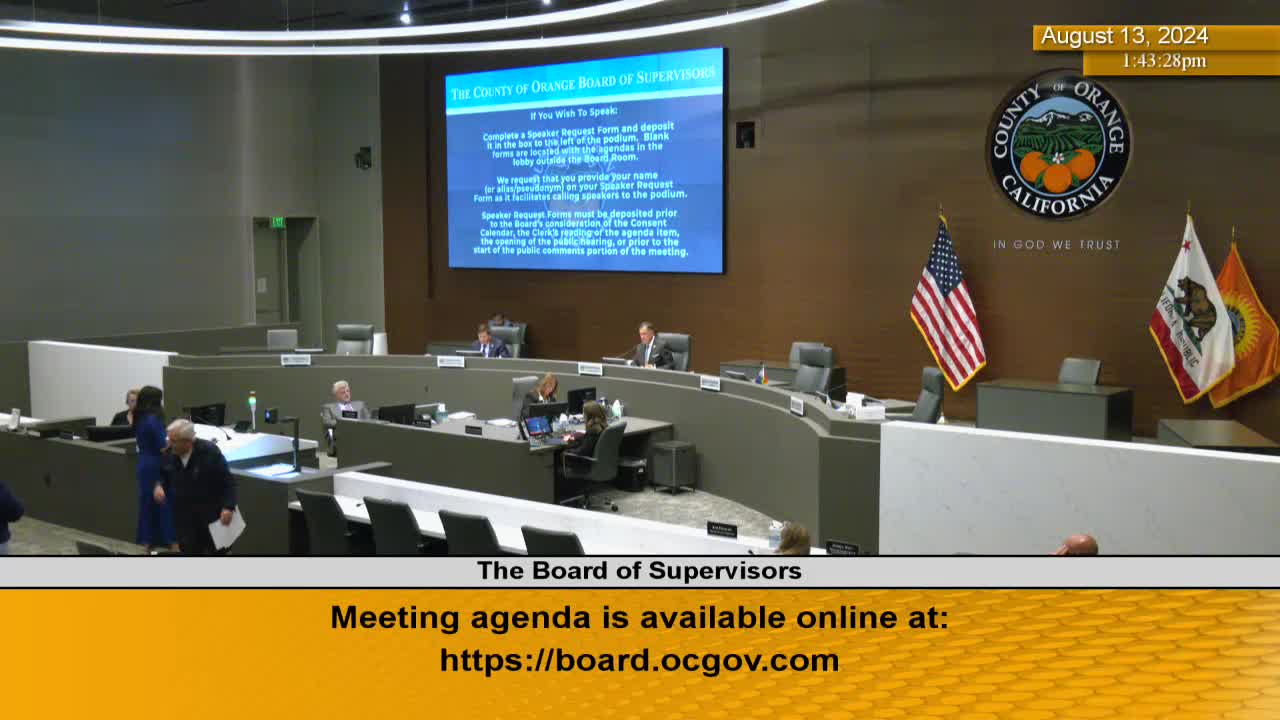California's push for totalitarian state sparks alarm
August 13, 2024 | Orange County, California
This article was created by AI summarizing key points discussed. AI makes mistakes, so for full details and context, please refer to the video of the full meeting. Please report any errors so we can fix them. Report an error »

On July 27, a significant constitutional convention took place in Orange County, California, where participants discussed the perceived failures of the current state government and proposed a reorganization of California's political structure. The convention, modeled after West Virginia's path to statehood, resulted in the unanimous passage of several ordinances that assert California's governance is in insurrection against the United States Constitution.
Key speakers at the convention criticized the state's leadership, labeling it as a \"tyrannical\" regime that allegedly supports illegal immigration and fails to protect its citizens from crime. They argued that California's political landscape has devolved into a \"monoparty\" system, dominated by what they described as socialist and communist influences, which they claim are undermining the foundational principles of the U.S. Constitution.
The discussions highlighted a historical perspective, noting that California's original 1850 constitution was replaced in 1879, leading to what they view as a systematic erosion of constitutional governance over the past 155 years. The speakers expressed concerns about various amendments and propositions, particularly Proposition 14, which they argue has contributed to the decline of a representative government by allowing the top two candidates from any party to advance to the general election, regardless of party affiliation.
Additionally, the convention addressed the issue of criminal cartels allegedly gaining control over California's southern border, facilitating human trafficking and the distribution of fentanyl. The speakers claimed these activities are intertwined with the state's political machinery, further exacerbating the state's challenges.
A proposed amendment to replace California's bicameral legislature with a unicameral, nonpartisan body was also discussed, with concerns that its passage would lead to a complete loss of representative governance and the establishment of a totalitarian state.
The convention concluded with a call to action, urging participants to recognize the urgency of these issues and the potential consequences for California and its residents.
Key speakers at the convention criticized the state's leadership, labeling it as a \"tyrannical\" regime that allegedly supports illegal immigration and fails to protect its citizens from crime. They argued that California's political landscape has devolved into a \"monoparty\" system, dominated by what they described as socialist and communist influences, which they claim are undermining the foundational principles of the U.S. Constitution.
The discussions highlighted a historical perspective, noting that California's original 1850 constitution was replaced in 1879, leading to what they view as a systematic erosion of constitutional governance over the past 155 years. The speakers expressed concerns about various amendments and propositions, particularly Proposition 14, which they argue has contributed to the decline of a representative government by allowing the top two candidates from any party to advance to the general election, regardless of party affiliation.
Additionally, the convention addressed the issue of criminal cartels allegedly gaining control over California's southern border, facilitating human trafficking and the distribution of fentanyl. The speakers claimed these activities are intertwined with the state's political machinery, further exacerbating the state's challenges.
A proposed amendment to replace California's bicameral legislature with a unicameral, nonpartisan body was also discussed, with concerns that its passage would lead to a complete loss of representative governance and the establishment of a totalitarian state.
The convention concluded with a call to action, urging participants to recognize the urgency of these issues and the potential consequences for California and its residents.
View full meeting
This article is based on a recent meeting—watch the full video and explore the complete transcript for deeper insights into the discussion.
View full meeting
